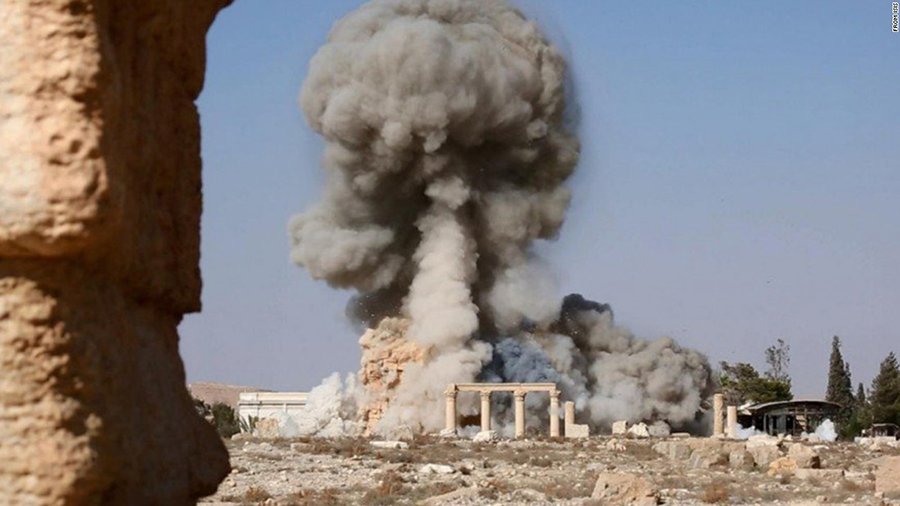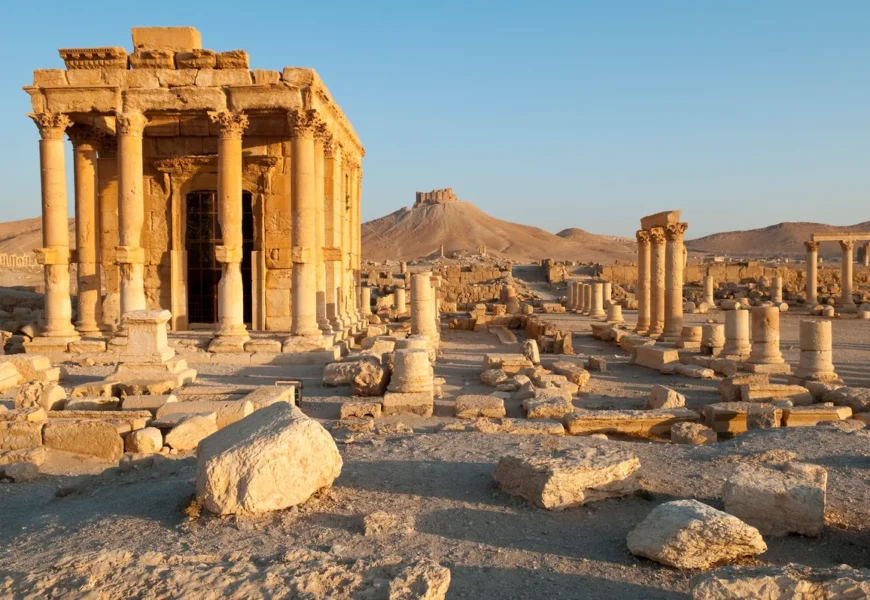In war, we expect blood. In theft, we expect greed.
But what about the theft of blood itself—of memory, of identity, of the remnants that tell us who we were before we became who we are?

(photo credit: REUTERS)
This isn’t just about looted artifacts. It’s about a trade that turns history into a weapon, funding the very groups that want to rewrite or erase it entirely. And the deeper you look, the more unnerving the connections become.
History for Sale—But Who’s Buying?
Let’s go back to 2014. ISIS sweeps across northern Iraq and eastern Syria, capturing land, oil fields, and something most people didn’t pay much attention to at the time: ancient cities. Archaeological sites. Temples older than Christianity, marketplaces older than Rome.

And they didn’t just destroy them. That’s what got the headlines—sledgehammers in Palmyra, videos of explosions at ancient ruins. But much of the destruction wasn’t performative. It was transactional. Quiet. Calculated.

According to a Guardian report in 2015, ISIS may have been pulling in up to $100 million a year from the sale of antiquities. Even if that figure is exaggerated—some believe it is—the intent is unmistakable. And the reality is simple: there is a market.
UNESCO calls this trade a “source of terrorism financing.” The artifacts—plundered from Syria, Iraq, Libya—find their way into Europe, the U.S., and parts of Asia. Smuggled. Rebranded. Sold. Sometimes even displayed in places where people come to appreciate culture, unaware they’re gazing at something taken in blood.
How It Actually Works
It’s not hard to understand why terrorist groups lean on antiquities. Compared to weapons or narcotics, it’s lower risk and, in many cases, harder to trace.

A single statue or fragment of a scroll—worth tens or hundreds of thousands—can be slipped into the hands of a middleman, who passes it to another, and then another. Somewhere down the chain, it lands in a gallery or auction house, where provenance becomes murky and questions quietly evaporate.
Dr. Amr Al-Azm, a Syrian archaeologist, put it plainly: “The antiquities trade is a low-risk, high-reward enterprise for terrorists.”
And he’s not wrong.
This Isn’t Just Looting. It’s a Funding Model.
Still, it’s only one part of a larger financial ecosystem that sustains extremist groups.
- Kidnapping for ransom: Al-Qaeda and others have earned millions abducting foreign nationals.
- Extortion: In occupied territories, locals are often forced to pay “taxes”—a nice word for protection money.
- Black market oil: At one point, ISIS controlled entire oil fields. That oil didn’t disappear. It flowed through illicit pipelines, bought by traders who—knowingly or not—helped bankroll terrorism.
- Donations: Some funding comes from ideological supporters, moved through hawala systems—informal money transfer networks that leave little paper trail.
So while blood antiquities are not the primary source of funding, they are far from insignificant. They also carry a different kind of weight. Not just in dollars, but in meaning.
What We Lose When We Lose Artifacts
Here’s the part that’s harder to quantify: the cultural cost.
Palmyra, Nimrud, Nineveh—these weren’t just piles of stone. They were stories. They were the architecture of ancient thought. When terrorists reduce them to rubble or sell them to the highest bidder, it isn’t just about money. It’s about power. Erasure. Control.
Irina Bokova, then Director-General of UNESCO, said, “The destruction of cultural heritage is a war crime.” But it’s more than that. It’s a psychological strike—a way to sever people from their identity, their roots. Because if you don’t know where you came from, it becomes easier to control where you’re going.
What’s Being Done—and What Isn’t
To be fair, there are international efforts in play.
- The UN Security Council adopted Resolution 2347 in 2017—specifically targeting the destruction and trafficking of cultural property.
- Interpol works with UNESCO to recover stolen artifacts and flag suspicious shipments.
- Organizations like the Antiquities Coalition push for tighter laws and better due diligence from collectors and institutions.
But enforcement remains patchy. There’s no universal database of stolen antiquities. Customs officials often lack the training to identify these objects. And the art market is notoriously opaque. In some cases, even well-meaning buyers don’t realize what they’re holding.
Are We Asking the Right Questions?
There’s some debate—understandably—about how much attention should go to antiquities trafficking compared to, say, oil smuggling or arms deals.
Matthew Levitt, a counterterrorism expert, put it bluntly: “The sale of artifacts is a drop in the ocean.” And maybe he’s right, in purely economic terms.
But let’s not pretend that value is only measured in revenue.
This is about identity theft on a civilizational scale.
Tess Davis of the Antiquities Coalition argues we’re not doing enough. That unless we hold buyers and institutions accountable—unless we reduce demand—the supply will never stop.
And maybe that’s where the real problem lies. Not in the shadows where terrorists dig up the past, but in the lit auction rooms and private collections where those pieces of the past quietly reappear, no questions asked.
What Now?
The uncomfortable truth? A stolen artifact from Mosul might now sit on a pedestal in a New York apartment.
A shattered statue of a god once worshiped by Mesopotamians may have funded the bullets that killed a Syrian child.
This isn’t just history. It’s happening now. And it raises the kind of questions we don’t ask often enough.
What is the real cost of ignoring the past?
And what does it say about us—collectively—when we allow cultural memory to become collateral damage in the wars we don’t want to see?
Sources:
- The Guardian (2015) — “How an ancient civilization is being destroyed by ISIS”
- UNESCO (2017) — Culture on the Frontline
- Amr Al-Azm, interview with National Geographic (2016)
- UN Security Council Resolution 2347 (2017)
- Tess Davis, Antiquities Coalition (2020)
- Matthew Levitt, The Washington Institute for Near East Policy (2018)














